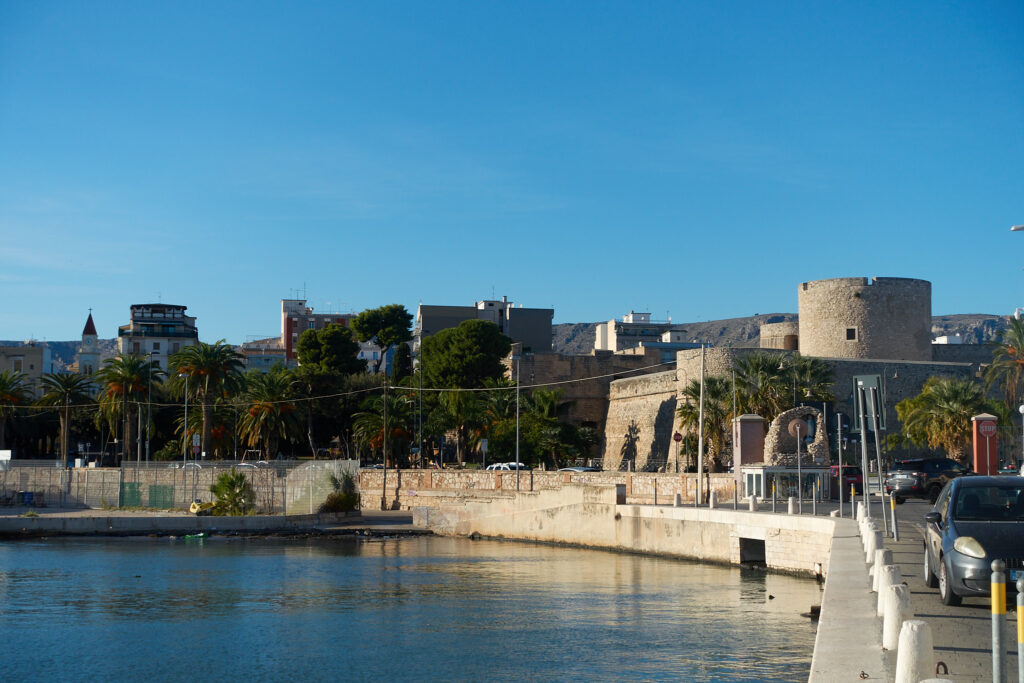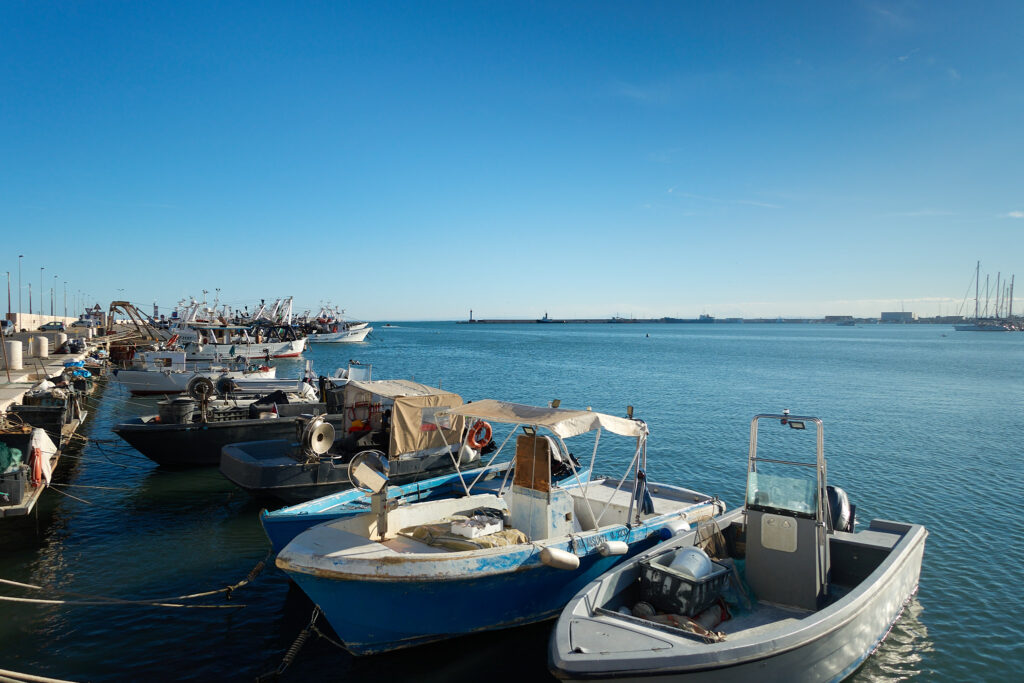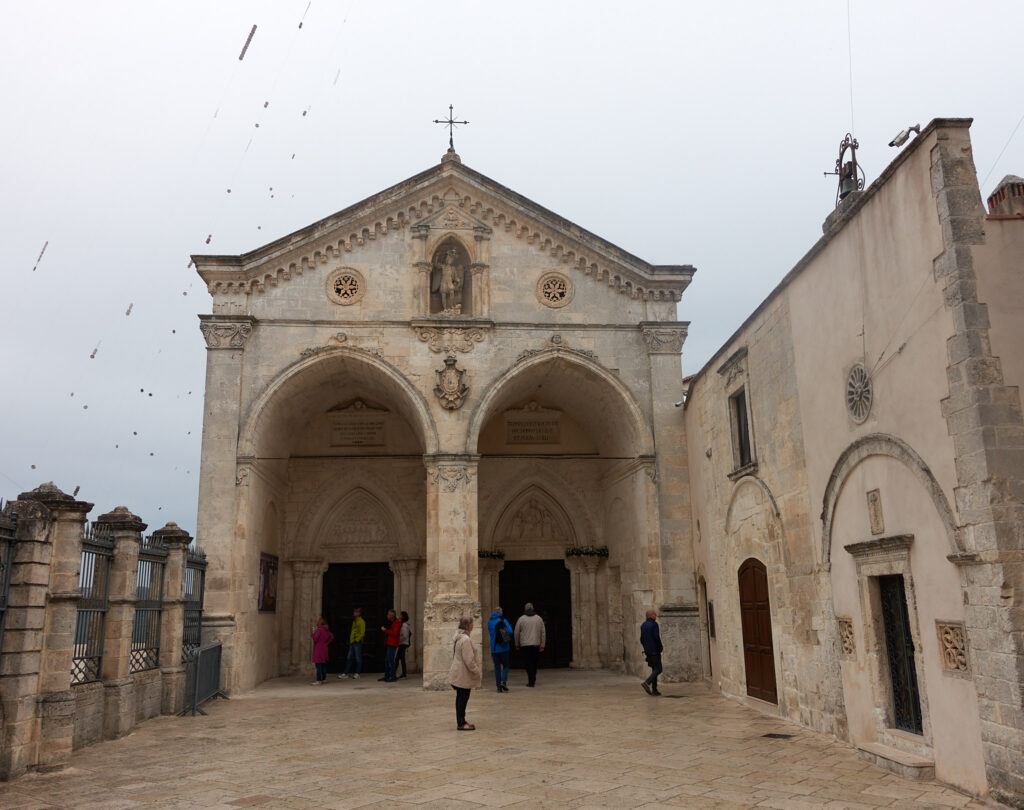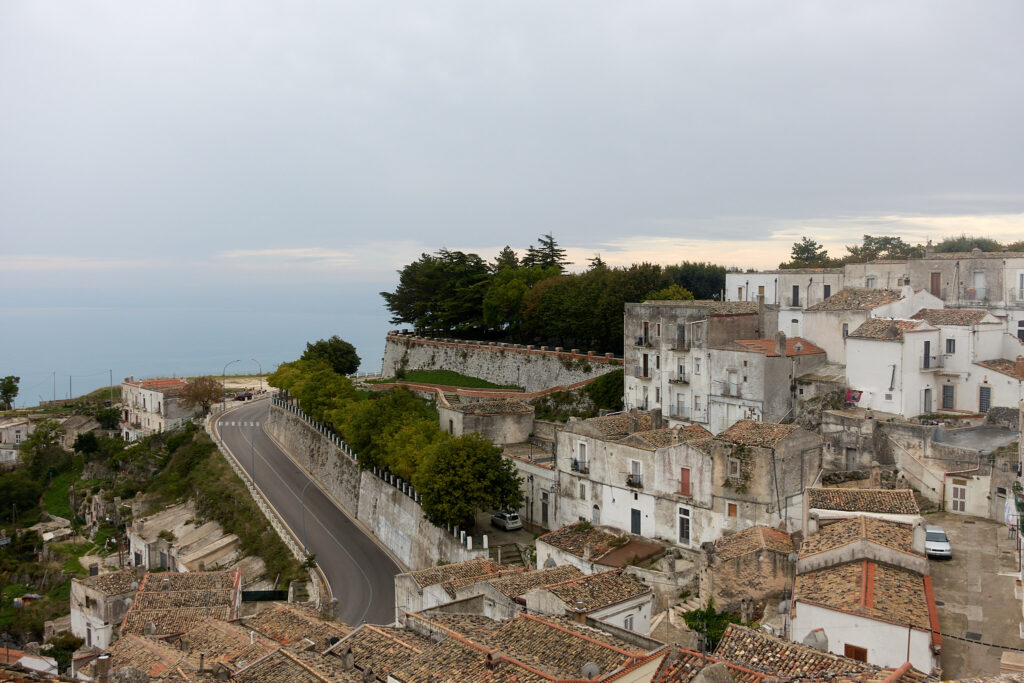… is Apulia (Puglia) whose capital Bari we reach after a seven-hour ferry ride. In contrast to the socialist countries of the East where stone is manufactured or concrete is poured, here natural stone is used to build cathedrals, basilicas, houses, streets and entire cities. Endless olive groves are surrounded by stone walls, some of which are several meters thick. We cycle off the boat around half past six o’clock. It is already pitch dark. Since September 21, the night has been longer than the day again. We have booked a room in the small town of Sannicandro di Bari, twenty kilometers inland from Bari. The route leads out of town along roads with little traffic. We cross two full road closures due to roadworks, but these are necessary in order to cross the highway, among other things. We cross a large bridge on the completely overgrown cycle path which also has a number of tripping hazards such as raised slabs and huge holes. Fortunately, the light of our bikes illuminate the path well, so that we reach our booked room at eight o’clock without any further incidents. We receive a very warm welcome from Nina who is what you would imagine a ‘grande dame of southern Italy’ to be like. After a quick shower, we walk a few steps into the small town and stop off at the local, traditional trattoria Il Nascondiglio which is tucked away in a small alley. We would not have found it without Nina.
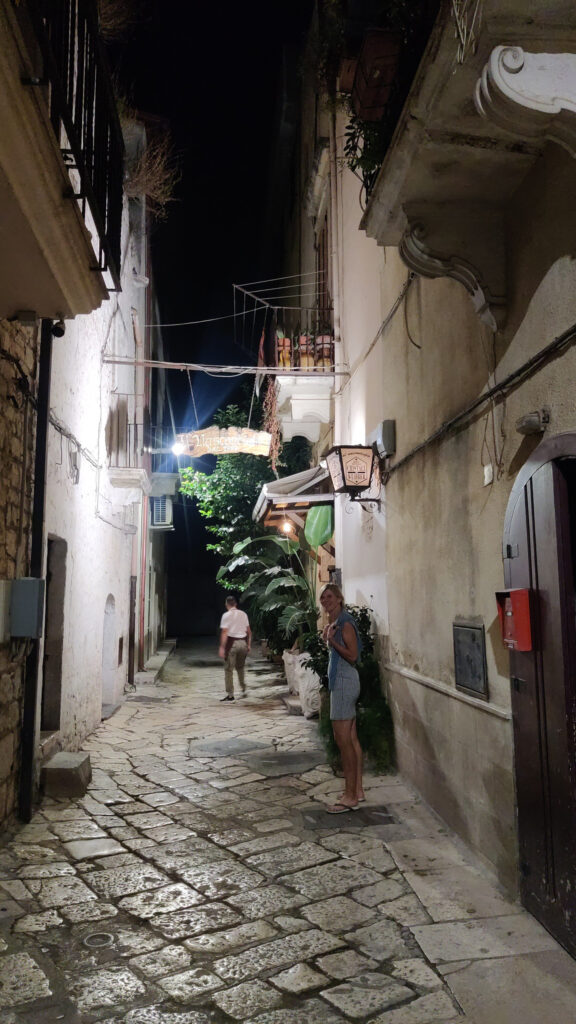
The next day we take the bus to Bari. Unlike other cities in Apulia, Bari is not nearly as “spruced up”. Bari has some impressive churches, first and foremost the gigantic cathedral, the no less magnificent Basilica of St. Nicholas and a beautiful old town. The southern Italian flair, the loud Italians, their joie de vivre and light-heartedness make us want to stay.
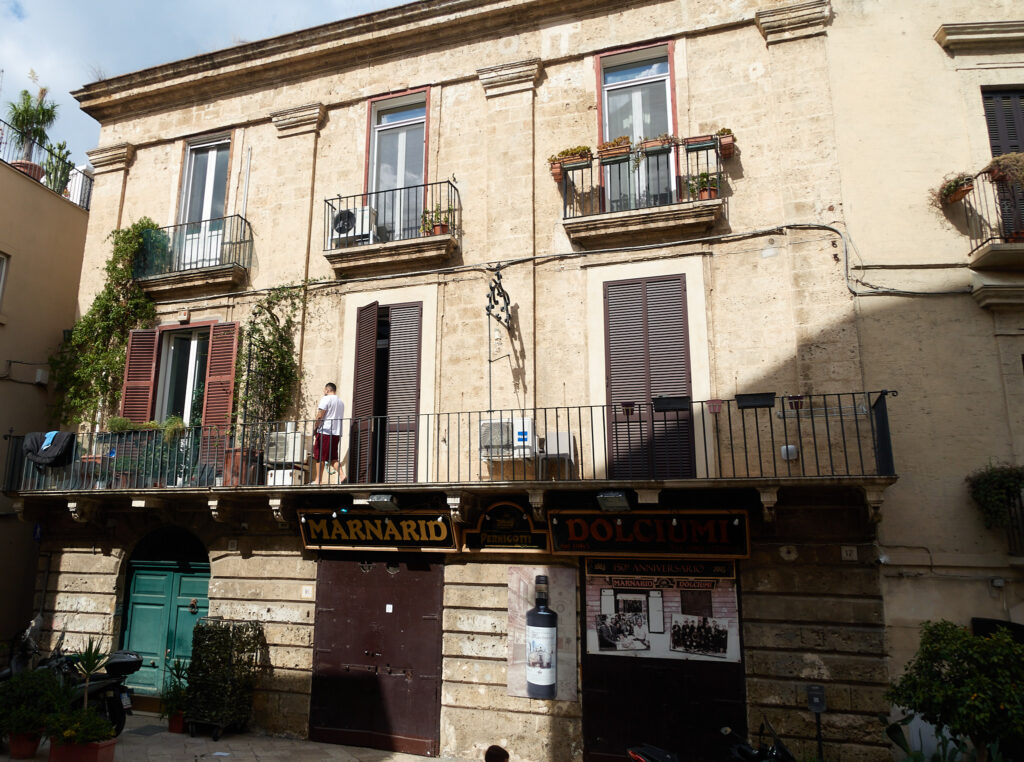

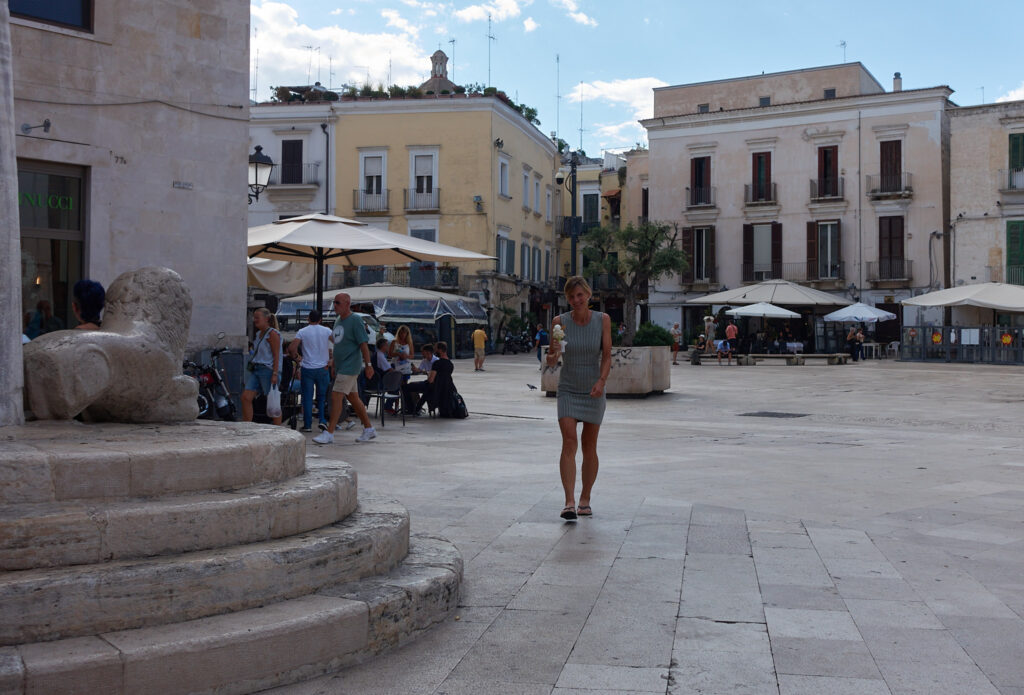
The old buildings are very well preserved, the facades painted, the wooden stores renovated, the train station is super modern. The same for public transport by bus and train. We thought that everything south of Milan was old and the infrastructure was dilapidated (like in Germany).
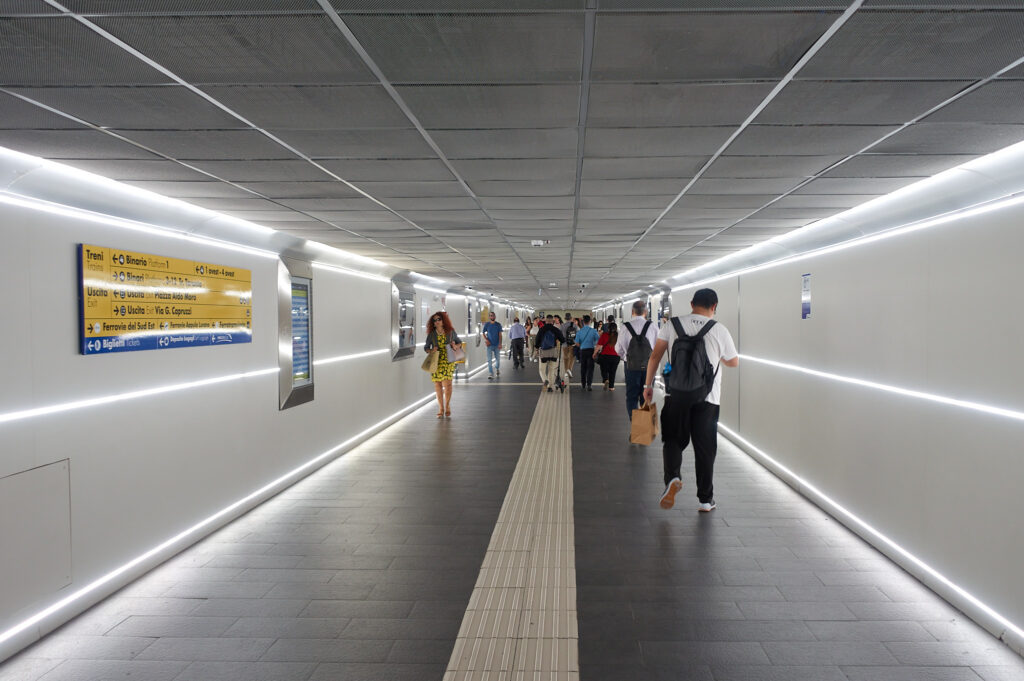
The train takes us to Matera. Matera is one of the oldest permanently inhabited cities in Italy, probably in the world. It can be traced back to the Palaeolithic period, 10th century BC.
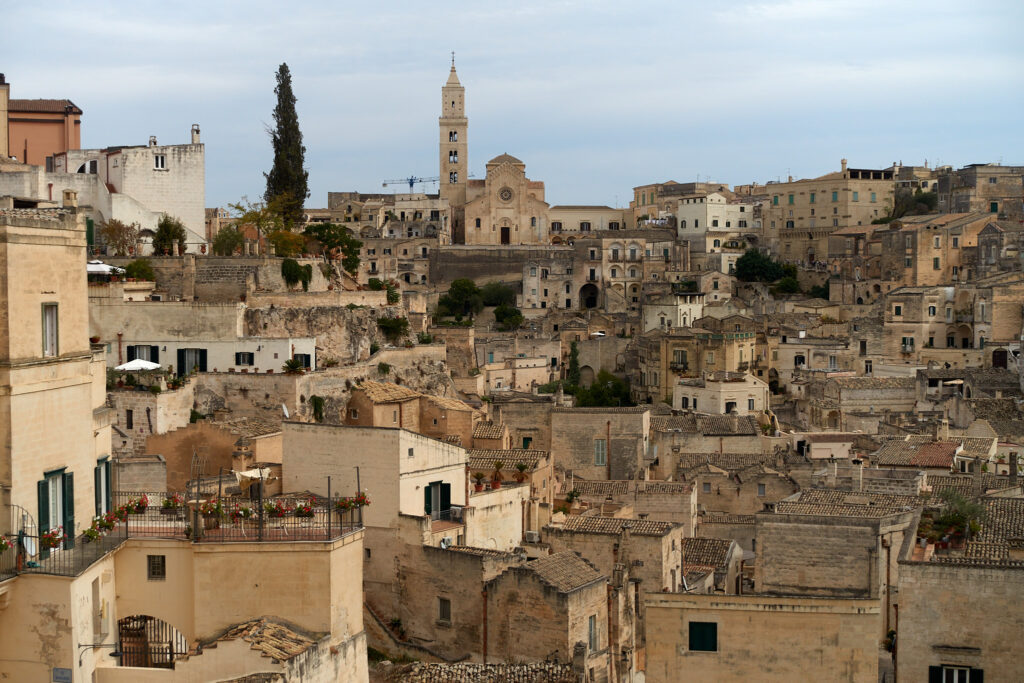
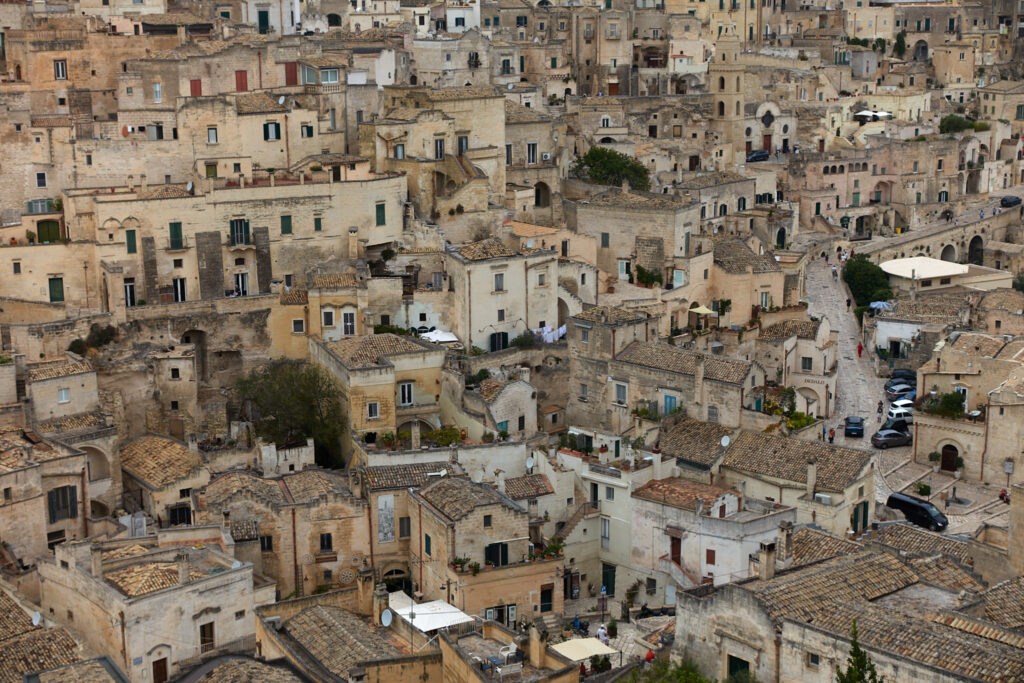
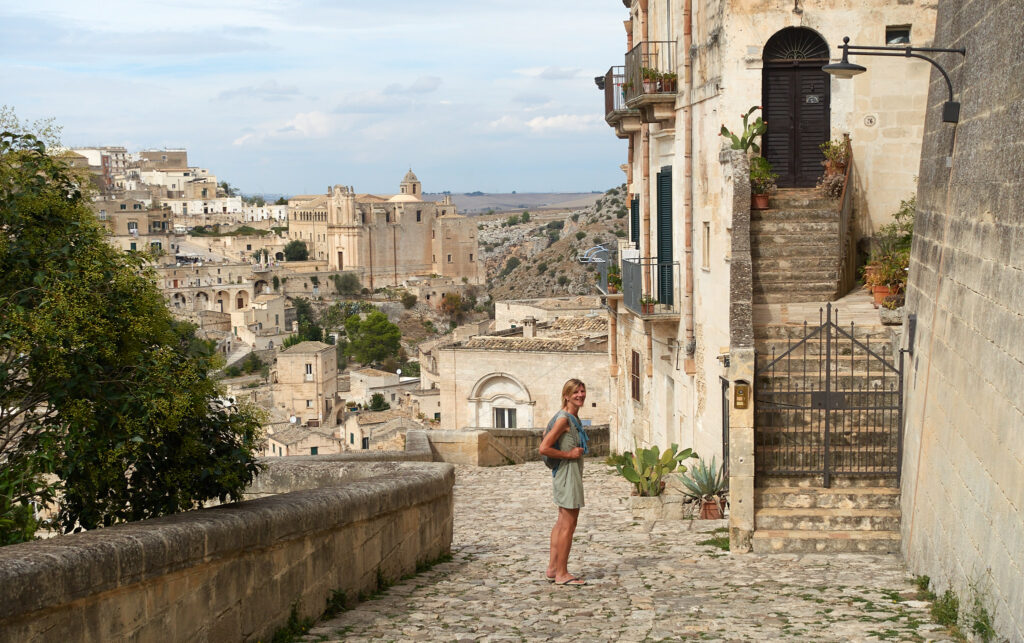
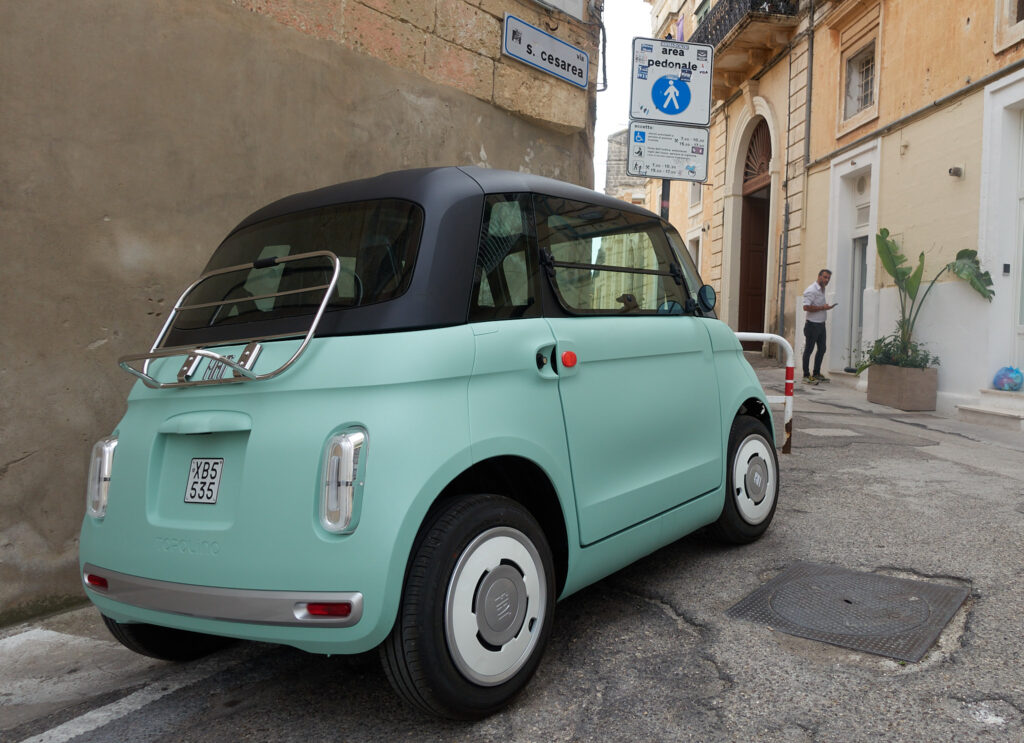
We travel on via Alberobello, the trulli village. The shed-like dark quarry stone roofs give the whitewashed trullo which originally stood in the fields and not in the village, its characteristic appearance. Due to their construction from solid natural stone with very thick walls and tiny windows, the trulli offer good protection against the persistent summer heat in Puglia, as the interior only heats up slowly. In winter, on the other hand, a trullo stores the heat generated by an open fireplace for a long time. There are 1430 of them in this area, used as homes, hotels, doctors’ surgeries and other places to attract tourists.
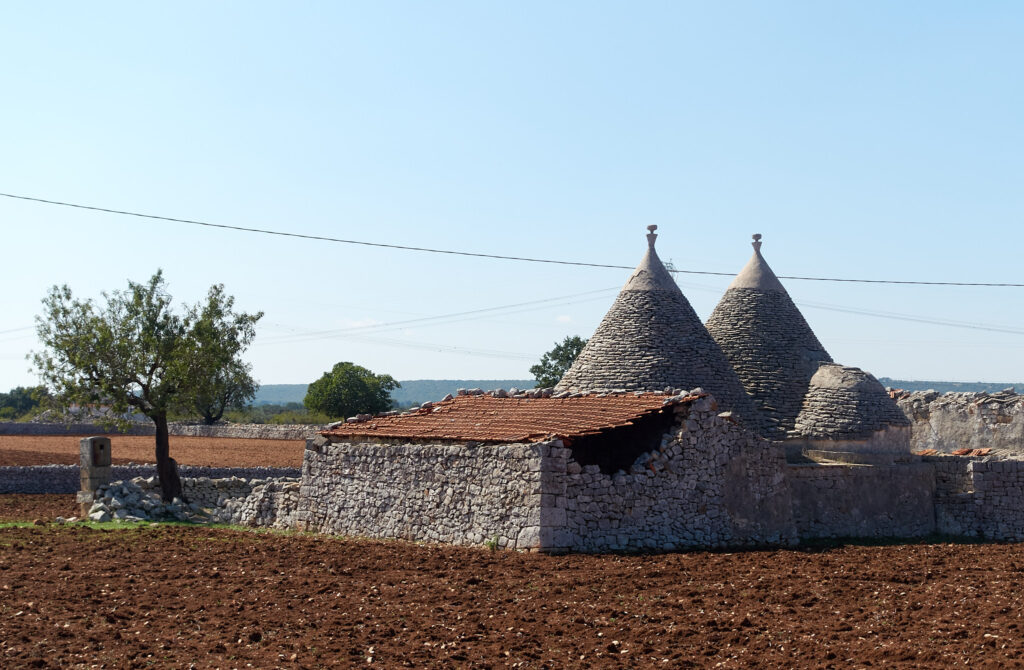

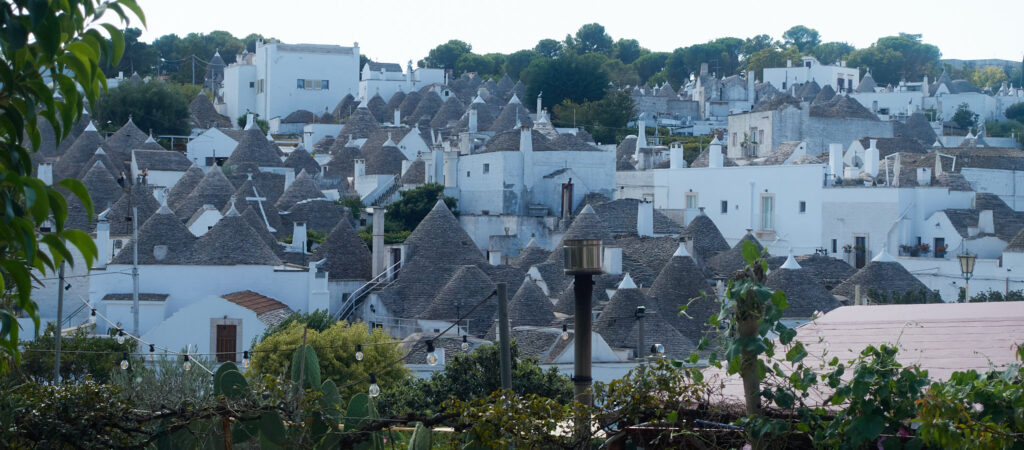
We reach Ceglia Messapica via Locotorondo. This will be the southernmost point of our journey this year. We camp on a donkey farm run by Germans in the middle of a cactus plantation.
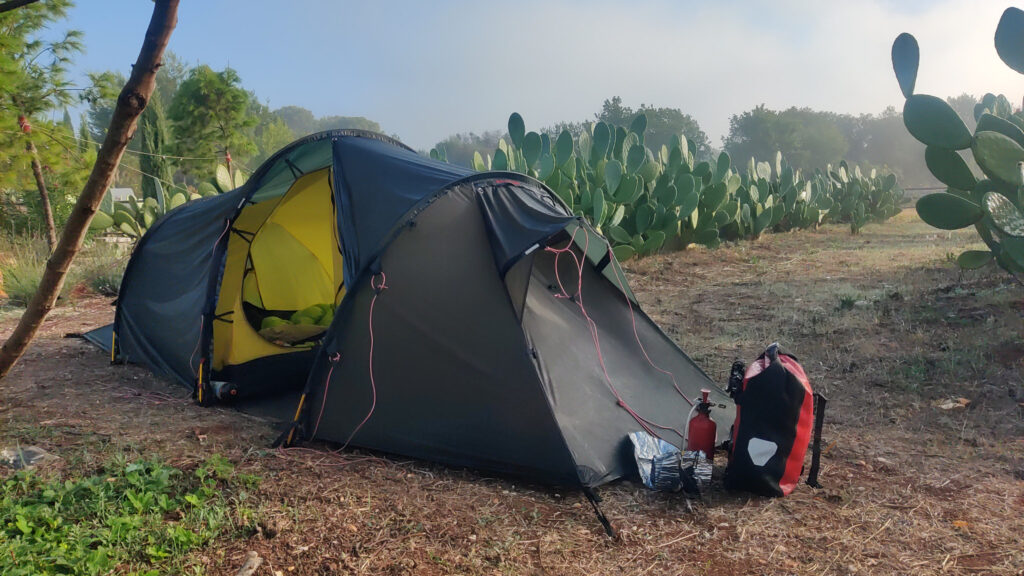
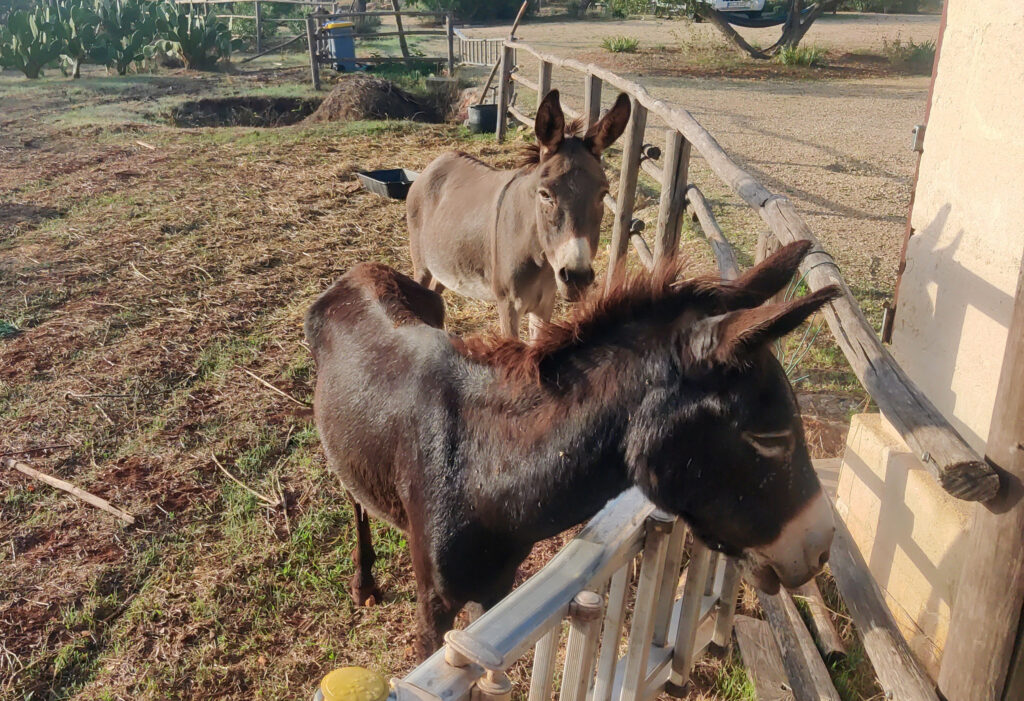
Apart from the donkeys, it is not so great here. We are not happy with the owners and the animals are annoying: mosquitoes in the evening, dogs barking all night long from the surrounding farms and millions of flies in the morning.
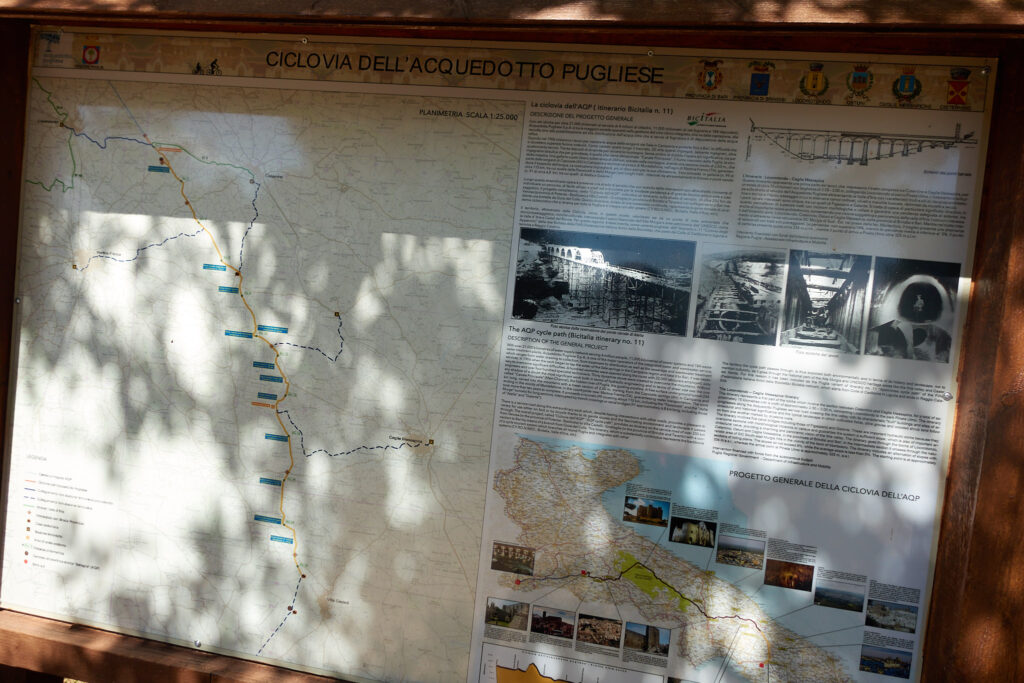
We enjoy the Bicitalia 11 – Ciclovia dell’Acquedotto Pugliese so much that we cycle back on it the next day. Finally we reach the sea: Polignano a Mare. Most of the buildings in the old town are white or brightly whitewashed and their flat roofs are reminiscent of North African towns. Polignano is bordered to the west by a high city wall and to the east by the cliffs which rise about twenty meters above the sea and are visually raised by the facades of the houses.
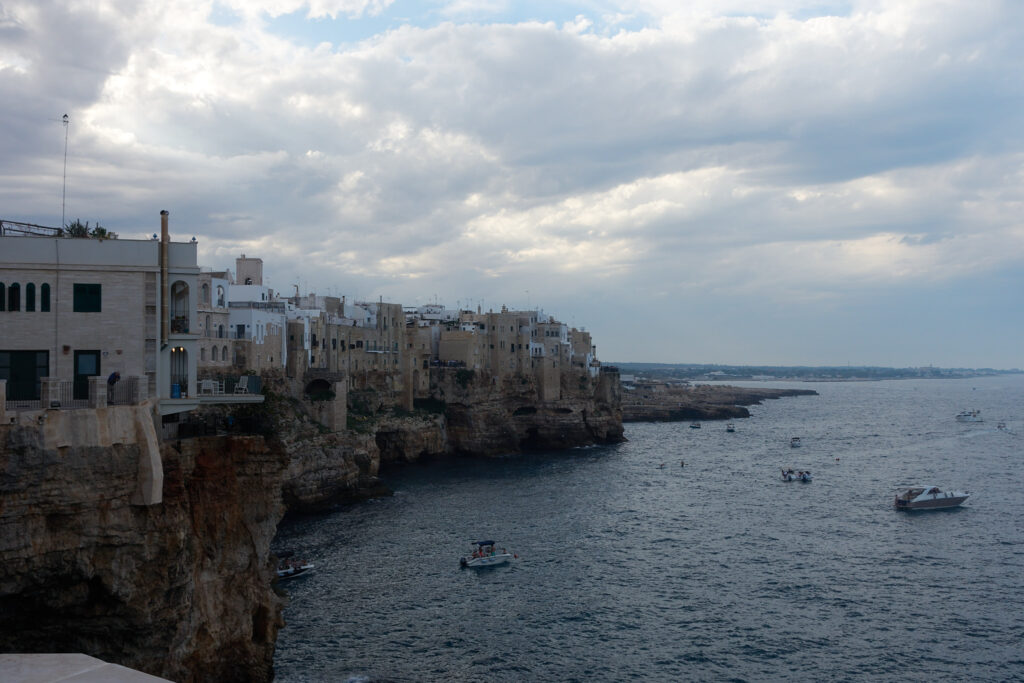
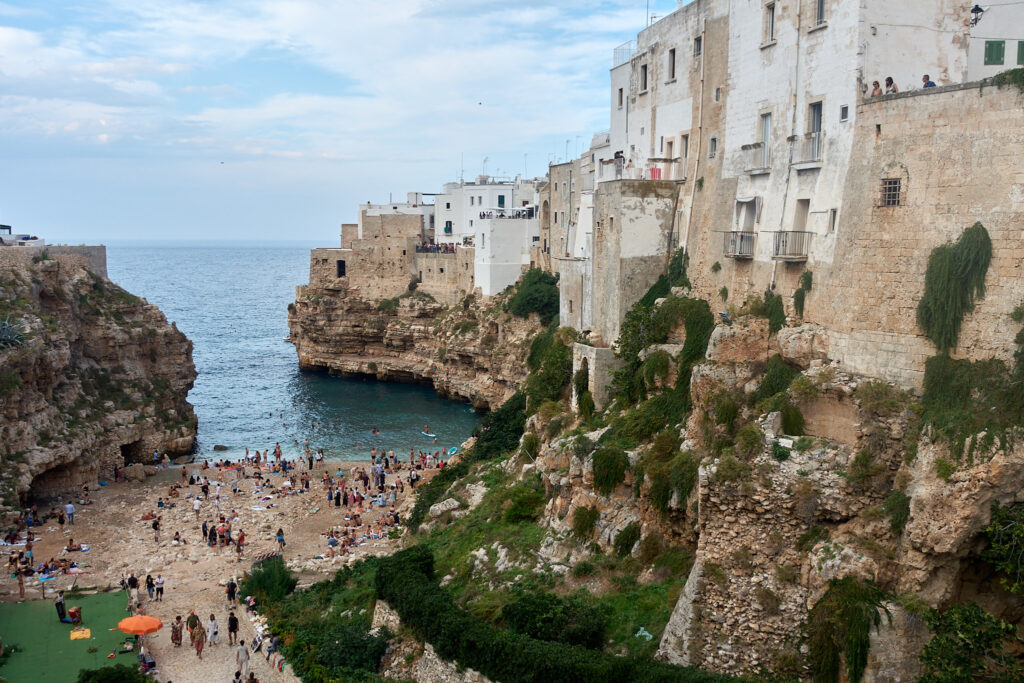
There are many caves in the rocks and small bathing bays between the rocks. It is the last weekend in September, the last weekend of the season. The city is full of Italian joie de vivre.
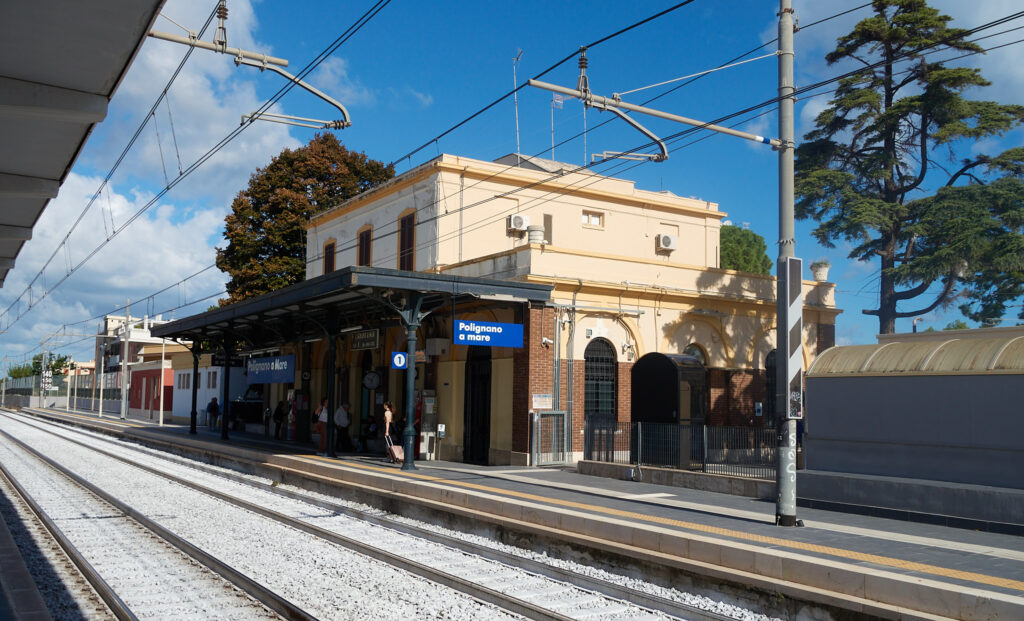
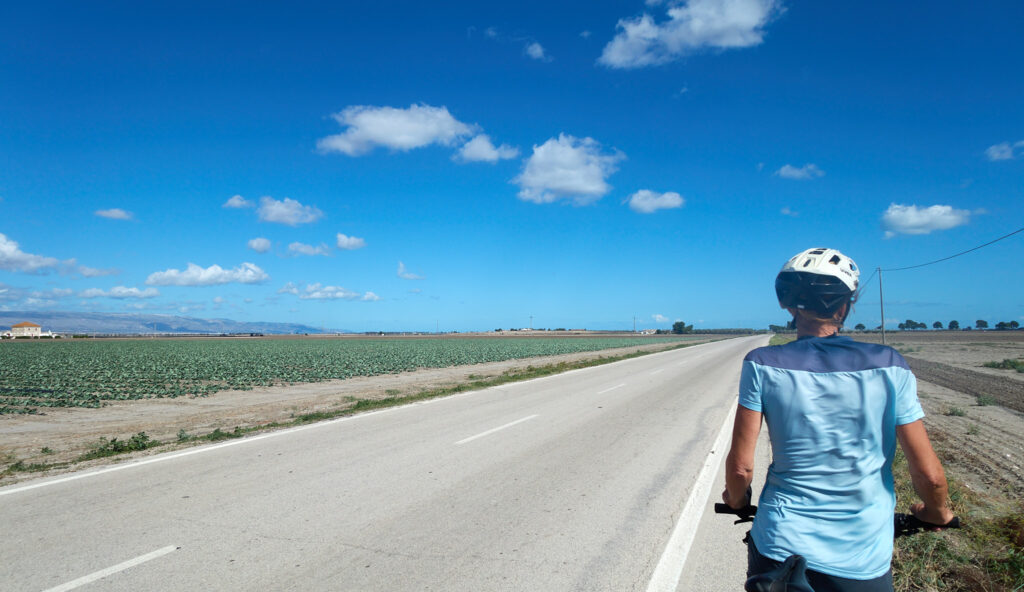
Here we rest from the physically and mentally demanding four-months journey: Let our minds wander and set our sights on infinity. At the beautiful Lido di Salpi campsite with its powdered sugar beach, views of the lively town of Manfredonia with its fishing port and the Gargano (Italian heel spur), a mountainous national park in the otherwise flat Apulia.
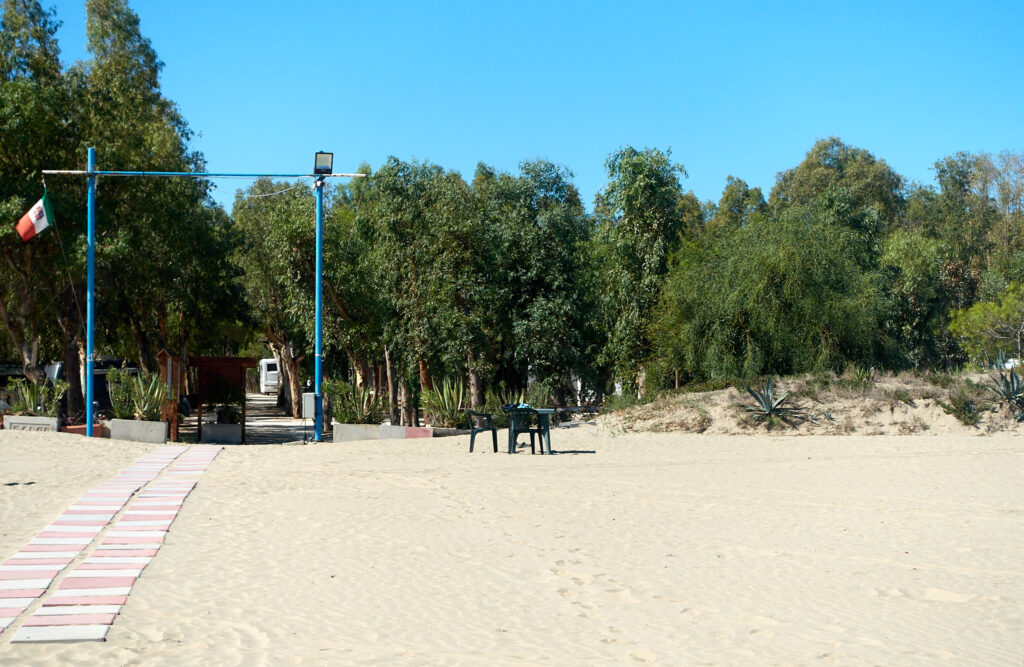
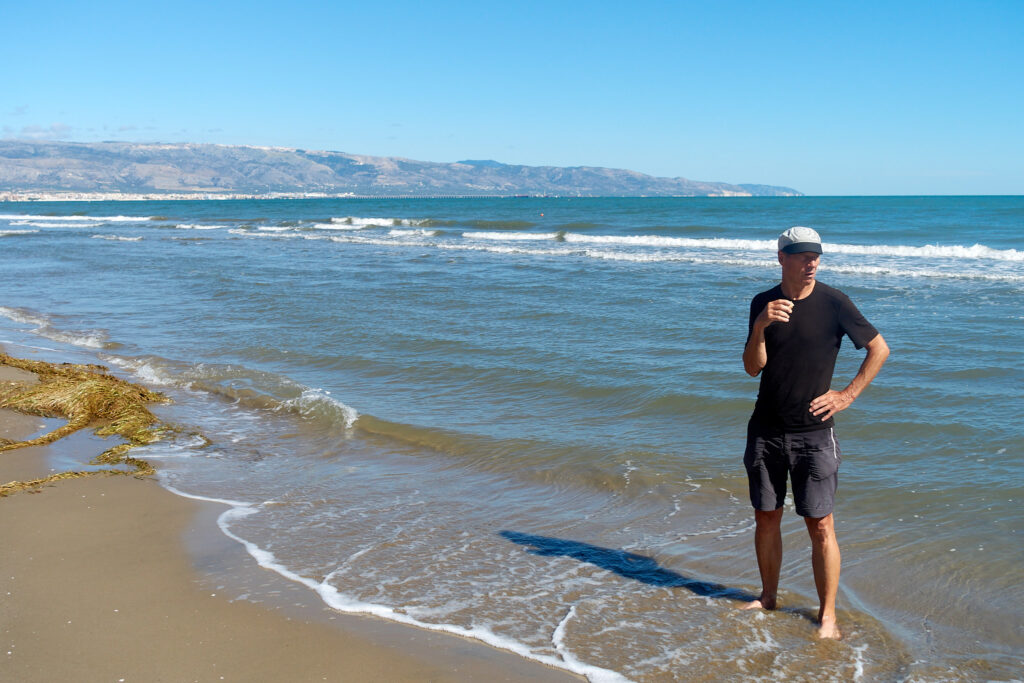
The days are monotonous …
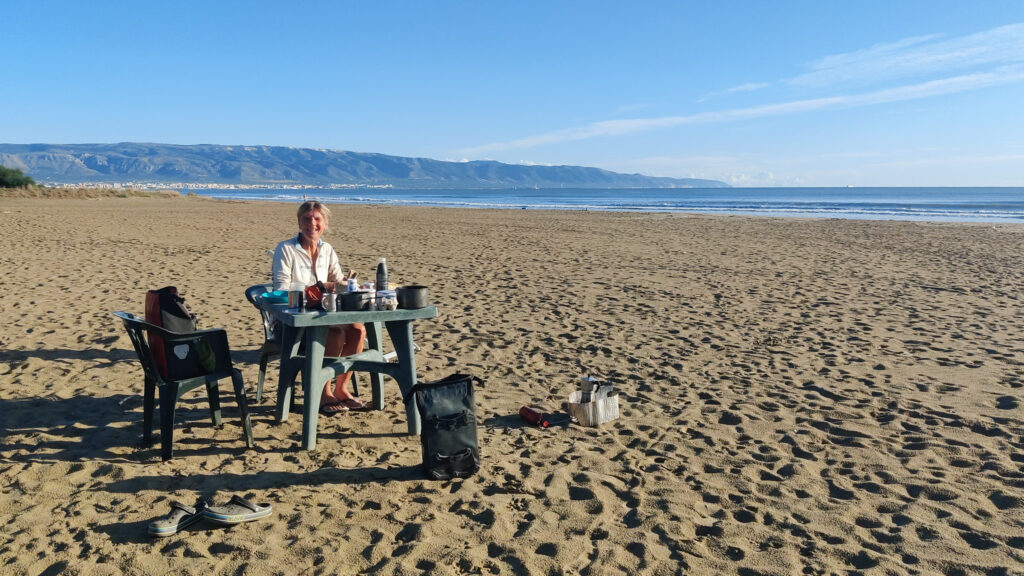
… breakfast on the beach in the morning. Then hanging out in the sun, reading, swimming in the sea …
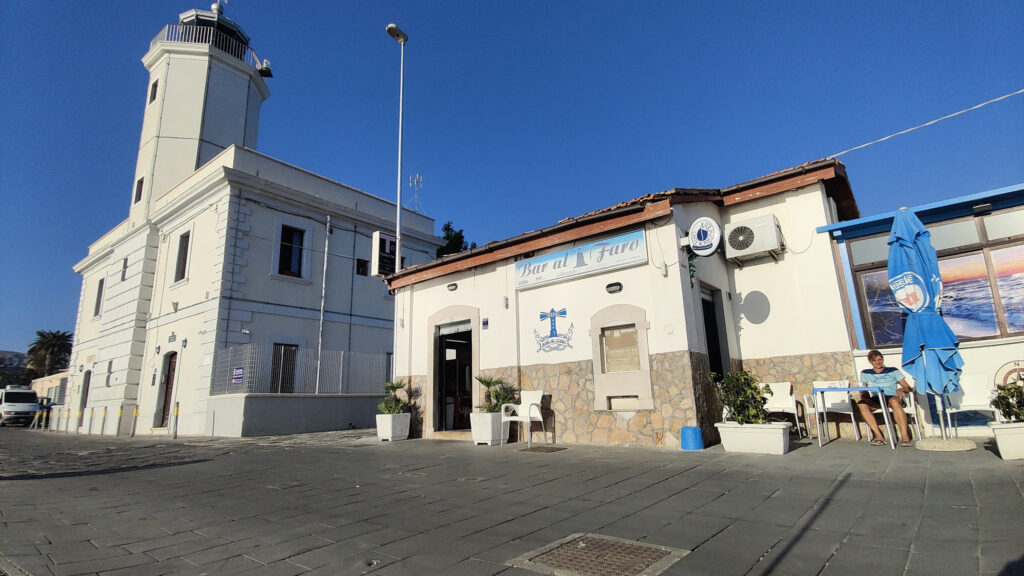
… in the afternoon we cycle 10 km to Manfredonia for ice-cream and a coffee in the harbor bar …
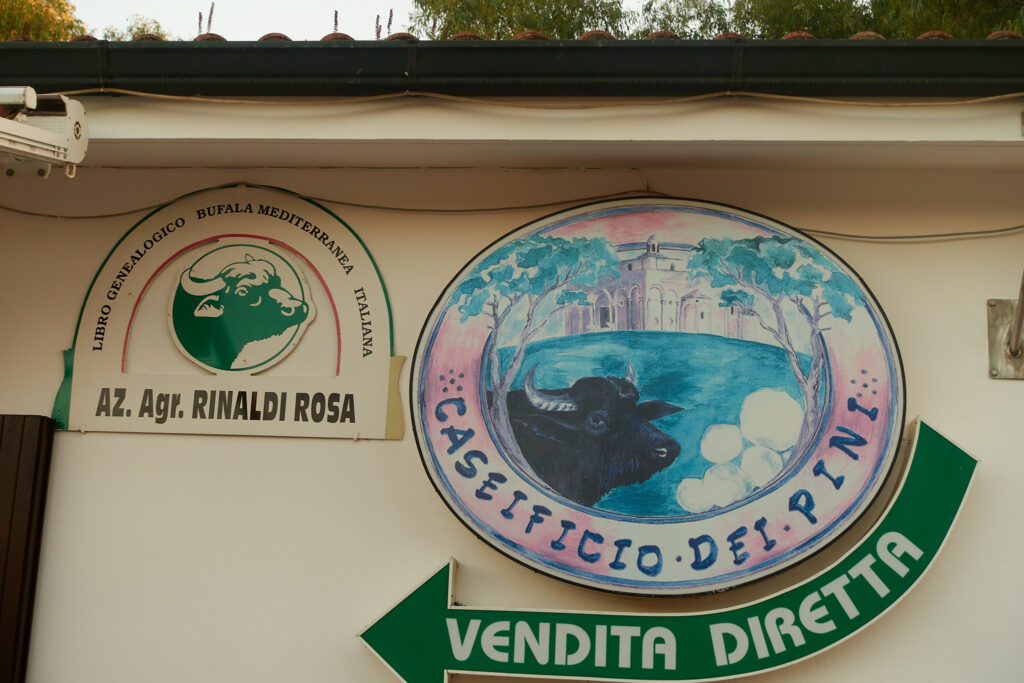
… and on the way back at the buffalo cheese farm for some delicious Mozarella di latte di Buffalo …
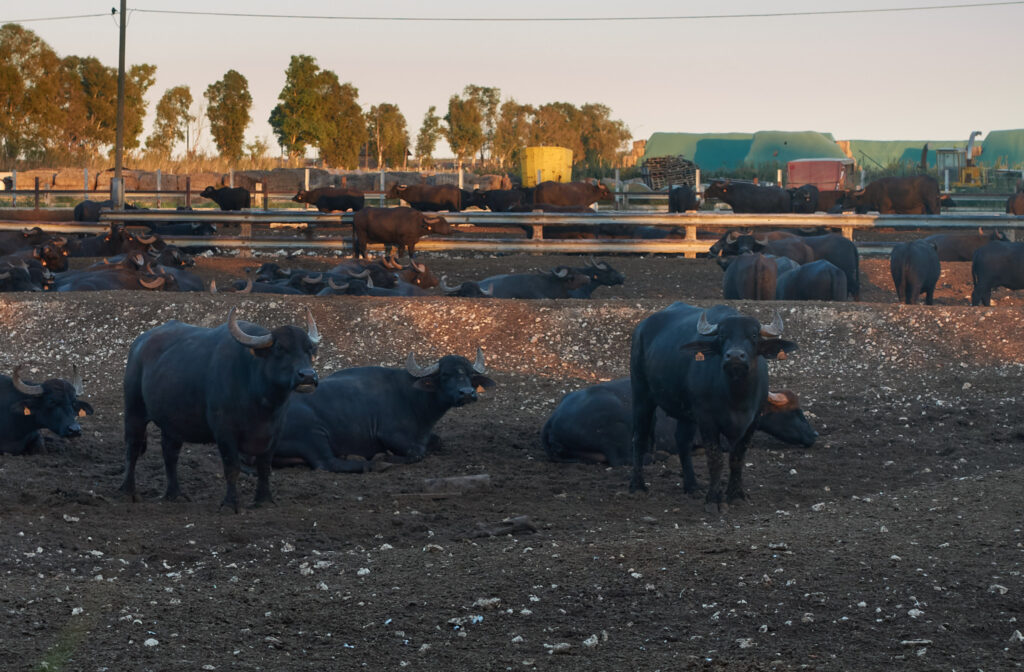
… cooking in the evening, a beer and a chat with the neighbors.
